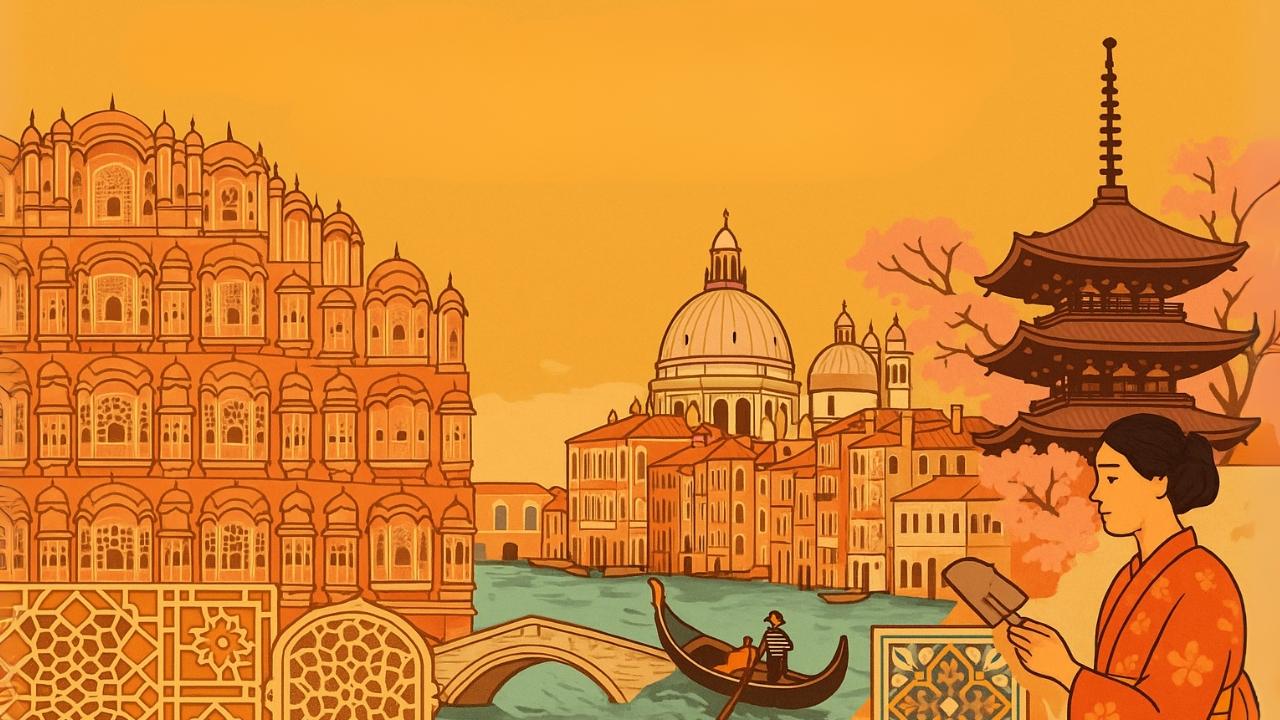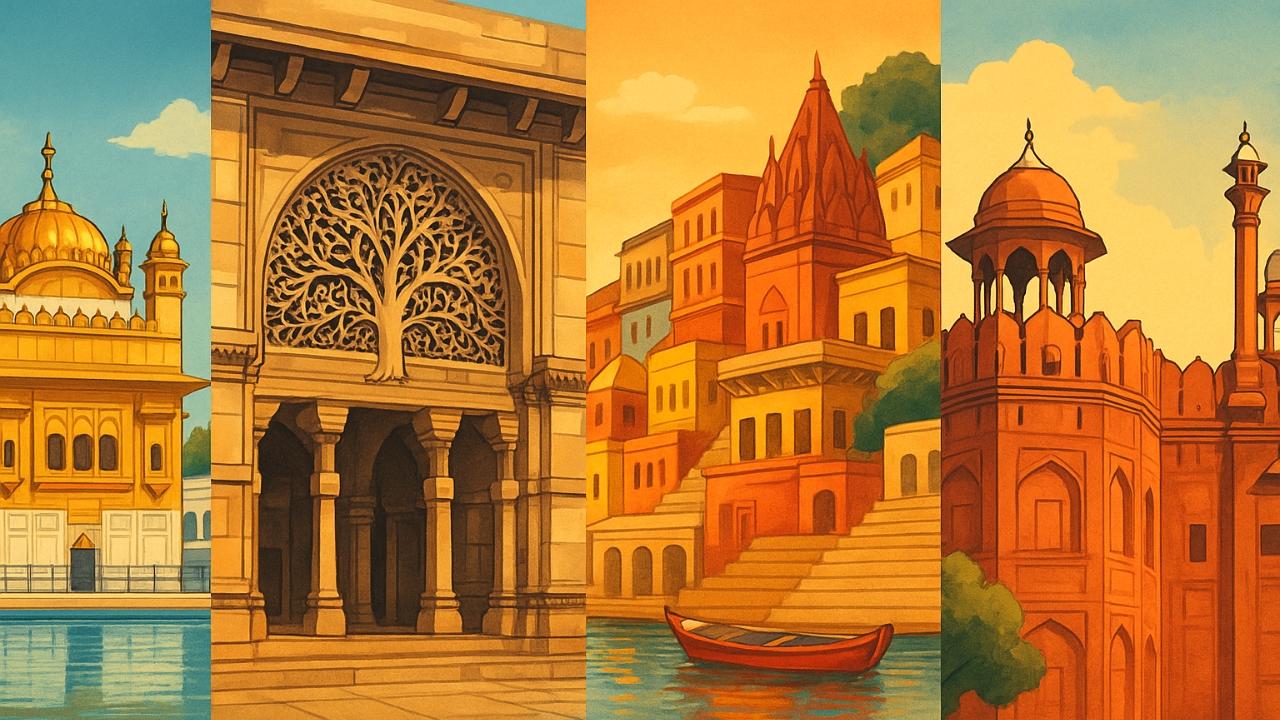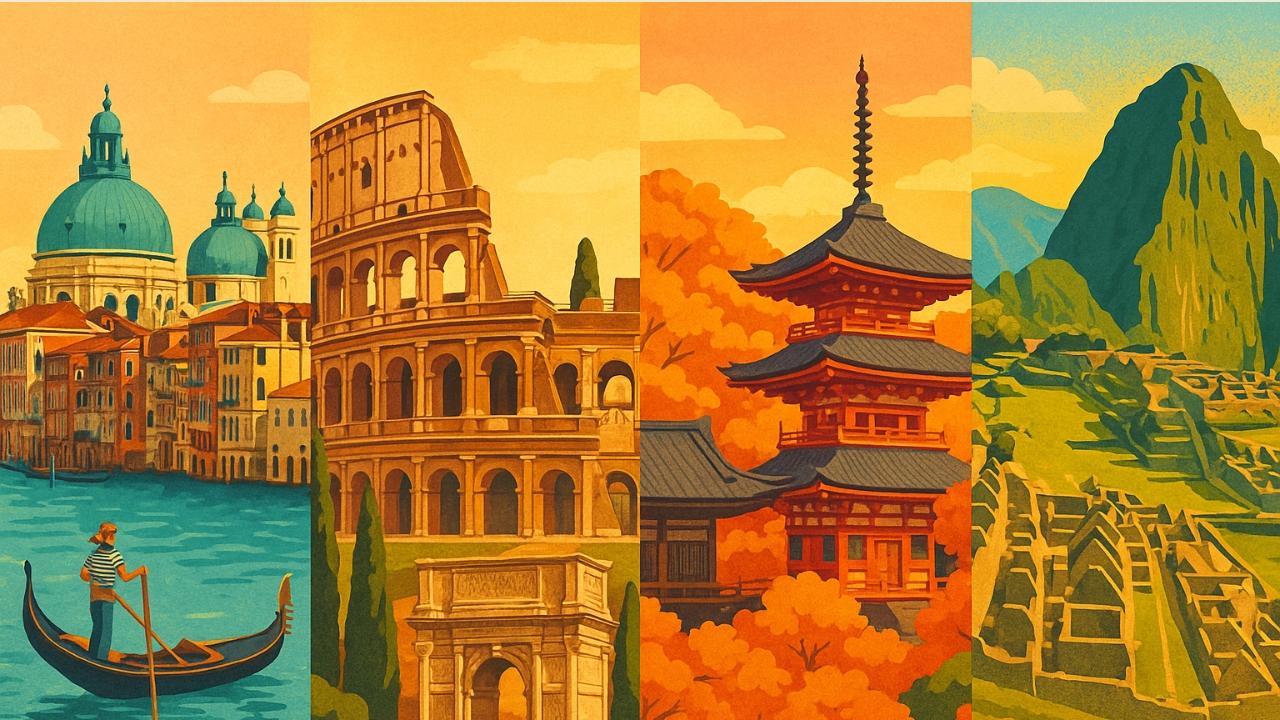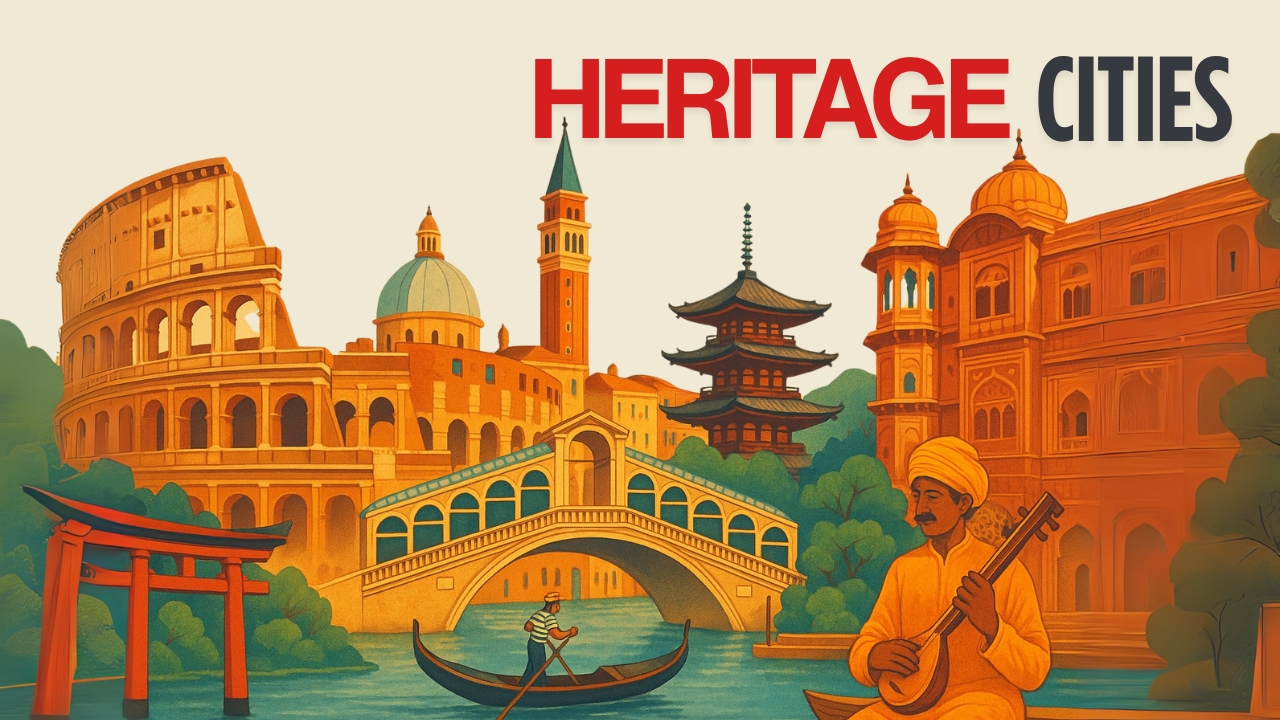Heritage Cities: Living Histories That Shape Our Built Future
In an era where glass towers rise faster than traditions can be remembered, heritage cities stand as resilient keepers of our collective memory. They are not just places; they are living, breathing chronicles of civilizations—where architecture, urban form, and human experiences converge to tell stories that stretch across centuries.
Whether it's the winding alleys of Varanasi, the pink streets of Jaipur, or the serene temples of Kyoto, heritage cities remind us of where we came from—and guide us in designing where we are headed.

What Is a Heritage City?
A heritage city is defined by its historical, cultural, and architectural richness. These cities have retained their original urban form, traditional lifestyles, and architectural identity over time, making them valuable sites of learning, preservation, and inspiration.
From ancient temples and mosques to colonial-era buildings and traditional bazaars, every corner of a heritage city tells a story. These cities are often listed under UNESCO’s World Heritage program due to their outstanding universal value.
Why Are Heritage Cities Important?
- Cultural Identity: They preserve the language, craft, art, and way of life of communities, ensuring continuity of intangible heritage.
- Architectural Evolution: They serve as physical textbooks of architectural styles— Gothic, Indo-Islamic, Mughal, Rajputana, Incan, and more.
- Tourism and Economy: They attract global interest, boosting local economies while educating visitors.
- Urban Wisdom: These cities teach resilience—how built environments can coexist with nature, time, and people.
Heritage Cities in India: A Timeless Tapestry

1. Varanasi, Uttar Pradesh
One of the world's oldest living cities, Varanasi—also known as Kashi or Banaras—has been continuously inhabited for over 3,000 years. Its ghats along the Ganges, ancient temples, and spiritual rhythm define the city's architecture. The dense, labyrinthine street network is more than urban planning—it’s a spiritual journey etched into stone.
Architectural Evolution:
Varanasi’s architecture spans early Hindu temples, Mughal mosques, and colonial-era institutions. Despite modernization, it has retained its traditional skyline—temple spires, stepped ghats, and courtyards tightly woven into its cultural fabric.
2. Ahmedabad, Gujarat
Designated as India’s first UNESCO World Heritage City, Ahmedabad presents a rare fusion of Hindu and Islamic architectural traditions. From intricately carved stepwells and wooden havelis to the iconic Sidi Saiyyed Mosque, the city embodies centuries of craftsmanship.
Architectural Evolution:
The city showcases the evolution from Solanki-era temples to Sultanate mosques and British colonial civic structures. The pols—self-contained neighborhoods with central courtyards— reflect climate-sensitive, community-oriented urban design.
3. Jaipur, Rajasthan
Jaipur, known as the Pink City, is a model of early urban planning in India. Founded in 1727 by Maharaja Jai Singh II, its grid-based layout is a unique blend of Vastu Shastra and modern rationality. Its architectural identity lies in its royal palaces, forts, and bazaars.
Architectural Evolution:
The city represents a dialogue between Rajputana opulence and Mughal influence, seen in structures like Hawa Mahal, City Palace, and Jantar Mantar. Its pastel pink color was introduced in the 19th century to welcome the Prince of Wales and has since become its signature.
4. Delhi
A layered city with 8 historical cities, Delhi embodies the story of India through its architecture. From the ruins of Lal Kot and the majestic Qutub Minar to Lutyens' New Delhi and bustling Chandni Chowk, Delhi is a mosaic of dynasties and ideas.
Architectural Evolution:
Delhi's skyline moves from Indo-Islamic forts and tombs (Humayun’s Tomb, Red Fort) to British colonial grandeur (Rashtrapati Bhavan, Connaught Place) and a rapidly modernizing urban core. The juxtaposition of styles makes it a living museum of India's political and cultural evolution.
International Heritage Cities: Global Legacies in Brick and Stone

1. Rome, Italy
Rome is often called a living museum, where layers of history—from the Roman Republic to the Renaissance—stand within walking distance. The Colosseum, Pantheon, and Vatican City coexist with modern piazzas and cafes.
Architectural Legacy:
Rome pioneered the classical language of architecture, with orders, domes, and arches influencing Western architecture for centuries. Renaissance and Baroque movements further enriched its urban landscape.
2. Fez, Morocco
Fez is the spiritual and cultural heart of Morocco. With its labyrinthine medina, traditional tanneries, and madrasas, it feels untouched by time.
Architectural Legacy:
Fez showcases Moorish architecture—horseshoe arches, zellige tilework, and riads (traditional courtyard houses). It is a city where artisanship defines architecture.
3. Kyoto, Japan
Kyoto is a city of calm elegance. As Japan’s capital for over a millennium, it houses over 2,000 shrines and temples, many of which survived the destruction of World War II.
Architectural Legacy:
Kyoto exemplifies Japanese minimalism and harmony with nature. Shinto shrines and Zen gardens blend seamlessly with the landscape, creating contemplative spatial experiences.
4. Cusco, Peru
The former capital of the Inca Empire, Cusco is a breathtaking fusion of indigenous and colonial influences.
Architectural Legacy:
Cusco’s Inca stonework forms the base of many colonial buildings, including churches and plazas. The fusion of Spanish baroque atop precise Incan foundations tells a story of resilience and adaptation.
Heritage Cities as Design Teachers
At the CP Kukreja Foundation for Design Excellence, we believe that heritage is not just about preservation—it is a powerful lens through which we can shape the future of design. Heritage cities offer more than historical value; they teach us how to create spaces that are functional, meaningful, and deeply rooted in culture, community, and context. Studying these cities is vital not only for conservation, but for inspiration—revealing how design can honor continuity while embracing change.They teach us:
- To build with purpose, not just for function
- To respect the human scale and community structure
- To consider climate, craft, and continuity in every design
Our mission is to foster a deeper understanding of India’s architectural legacy while engaging with global best practices. Through research, dialogue, and education, we aim to empower the next generation of architects and designers to draw wisdom from the past as they imagine a better, more inclusive future.
Explore More with Us
Let’s celebrate our heritage—not as something frozen in time, but as a dynamic source of design excellence.
Because the future of design begins with understanding where we come from.


